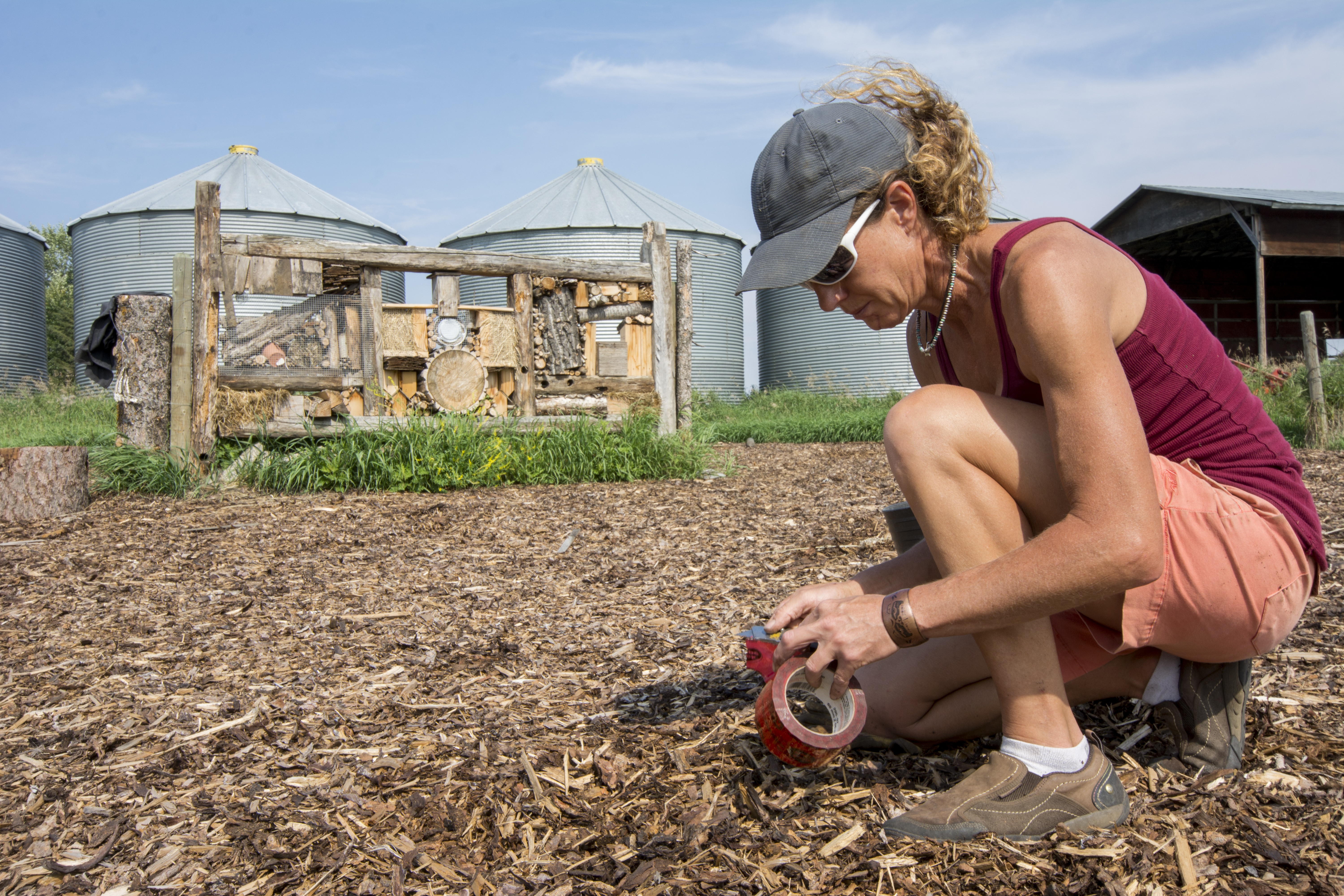A 25-acre section of land situated along Piper Creek, south of the City of Red Deer Landfill, saw a host of volunteers this past weekend as work continued on the land set to host an 11,000 sq. ft. edible cold temperate food forest.
Before the food forest can be planted in the fall of 2016, the planting area needed to be prepped to create suitable conditions for growth of the food producing plants.
Around 15 volunteers gathered at the site over the course of two days and worked to clear vegetation from the two pollinator beds as well as the larger future food forest bed.
Volunteers coordinated efforts to create water harvesting ditches on the food forest bed, as well as covered the two pollinator beds with black plastic mulch over the planting area to prevent weeds from growing over the next season.
The work bee and food forest are part of the Piper Creek Restoration Project, which will see the restoration of a degraded riparian ecosystem along the Piper Creek through a perma-culture design, with perma-culture being described as a system of agricultural and social design principles centered around simulating patterns and features observed in natural ecosystems.
The project has been headed by a local group, ReThink Red Deer – an organization which focuses on renewable energy, recycling and waste, general sustainability, as well as issues related to garden and food supply.
Project Lead for Rethink Red Deer, Rene Michalak, explained work on Saturday was a good start to being able to plant in the fall of 2016.
“The area is quite disturbed because it was a former intensive grazing location,” said Michalak. “The impact on the land has caused the typical response of large volumes of invasive and noxious weeds, so we have to come in and repair that land and look at how we approach the management of this land in the future through a different lens.
“The two pollinator beds are now effectively covered with mulch and black plastic to ensure the kill-off of those noxious weeds and plants, with the food forest site’s contour lines being fully tilled in order to allow for maximum water absorption and collection.”
ReThink Red Deer have partnered with supporting organizations such as the Red Deer River Watershed Alliance, the Red Deer River Naturalists, the Waskasoo Environmental Education Society, Alberta Food Matters, the Canadian Association for Rainwater Management – Prairie Chapter, Red Deer County and the City of Red Deer as landowner holding observer status.
Also partnered with ReThink is Cows and Fish (Alberta Riparian Habitat Management Society) – who will complete three ‘Riparian Health Inventories’ (RHI) over the course of the five-year project to collect comprehensive information about the structure and function of the vegetation, soil and hydrology within the project area.
“We need to ensure that what we are doing is sustainable,” said Michalak. “We spent the first year of the project observing, taking soil samples, water analysis, looking at the creek itself and what kind of plants were already present on the site.
“We need to know that whatever changes we make to this land are going to be beneficial and long-standing.”
The Piper Creek Restoration Project, along with the food forest was made possible by a $50,000 grant from Environment Canada’s Environmental Damages Fund (EDF). The EDF follows the ‘polluters pay principle’ to ensure those who cause environmental damage or harm wildlife take responsibility for their actions.
In this case, the polluter who paid for the project was the City of Red Deer itself following a 2010 spill which released 160 litres of Polychlorinated biphenyl (PCB) at an electrical substation along the Red Deer River.
The contaminated oil came from a metal drum at the substation according to a Jan. 14th, 2013 news release from Environment Canada.
The City pled guilty to one count under the Canadian Environmental Protection Act and as a result was fined $50,000 as well as ordered to create policies to ensure proper care for PCBs, create a training program for staff who handle PCBs, and introduce internal auditing to prevent future spills. Funding from the EDF is given to projects hoping to restore the natural environment and conserve wildlife in the geographic region where the original incident occurred, making the Piper Creek Restoration Project an ideal candidate.
The Piper Creek Restoration Project’s planting beds are also home to a unique pollinator hotel, the first of its kind in the City.
The pollinator hotel is a habitat structure made of natural and recycled material, which aims to provide nesting spaces for indigenous bees. With pollinator health being a concern worldwide the City opted to help address this issue on a local level with a $3,000 grant also coming from the Alberta Conservation Association in order to make the hotel possible.
For more on the Piper Creek Restoration Project, visit www.rethinkreddeer.ca.
jswan@reddeerexpress.com



